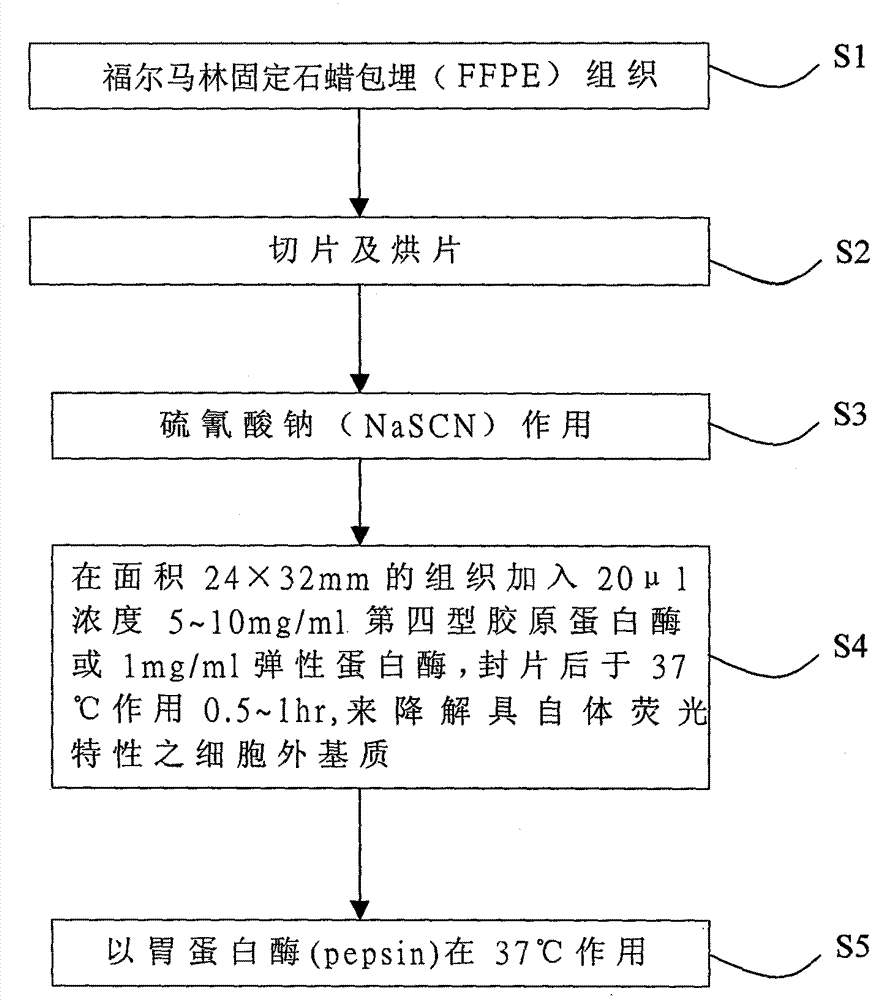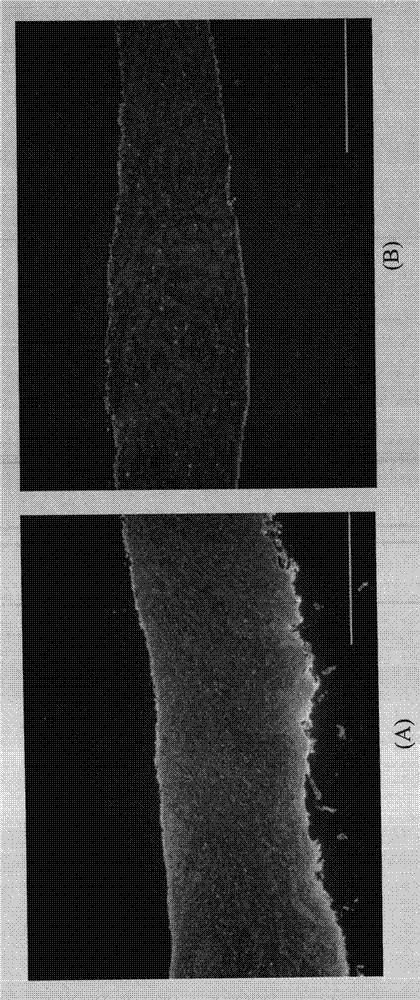Specimen pretreatment method for reducing auto-fluorescence interference in FISH (fluorescence in situ hybridization) and reagent kit therefor
An in situ hybridization and autologous technology, used in fluorescence/phosphorescence, material excitation analysis, etc., can solve the problem of reducing the ratio of fluorescent probe or antibody signal to background fluorescence, poor fluorescence signal resolution and quality, and affecting signal count. It can improve the quality and accuracy of inspection, reduce the autofluorescence phenomenon of human tissue, and improve the signal resolution.
- Summary
- Abstract
- Description
- Claims
- Application Information
AI Technical Summary
Problems solved by technology
Method used
Image
Examples
Embodiment Construction
[0025] Embodiments are carried out on the premise of the technical solutions of the present invention, and detailed implementation methods and specific operation processes are provided, but the protection scope of the present invention is not limited to the following embodiments.
[0026] The methods used in the following examples are conventional methods unless otherwise specified.
[0027] refer to figure 1 As shown, the present invention provides a sample pretreatment method for reducing autofluorescence interference in fluorescence in situ hybridization, comprising the following steps:
[0028] Step 1 (S1): formalin-fixed paraffin-embedded (FFPE) tissue;
[0029] Step 2 (S2): slicing and drying;
[0030] Step three (S3): sodium thiocyanate (NaSCN) effect;
[0031] Step 4 (S4): Add 20 μl of 5-10 mg / mL type IV collagenase or 1 mg / mL elastase to the above-mentioned treated tissue section with an area of 24×32 mm, seal the slice and act at 37° C. for 0.5-1 hr to come deg...
PUM
 Login to View More
Login to View More Abstract
Description
Claims
Application Information
 Login to View More
Login to View More - R&D
- Intellectual Property
- Life Sciences
- Materials
- Tech Scout
- Unparalleled Data Quality
- Higher Quality Content
- 60% Fewer Hallucinations
Browse by: Latest US Patents, China's latest patents, Technical Efficacy Thesaurus, Application Domain, Technology Topic, Popular Technical Reports.
© 2025 PatSnap. All rights reserved.Legal|Privacy policy|Modern Slavery Act Transparency Statement|Sitemap|About US| Contact US: help@patsnap.com



